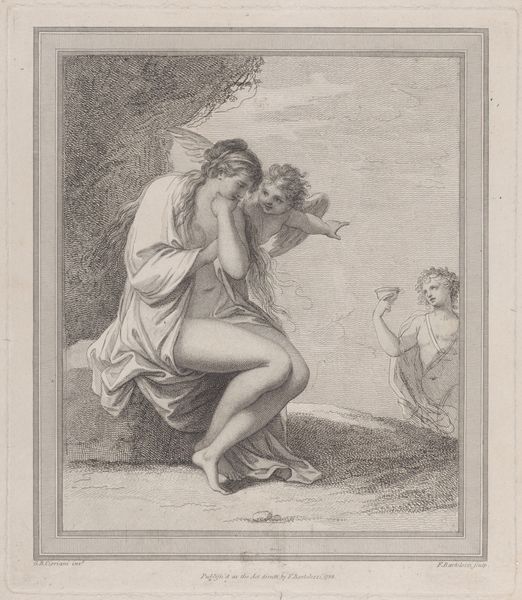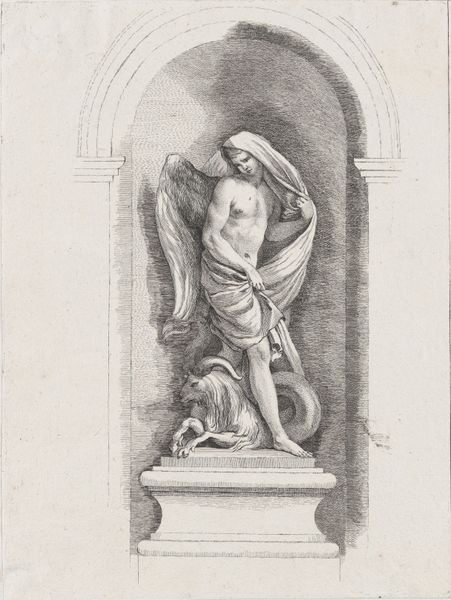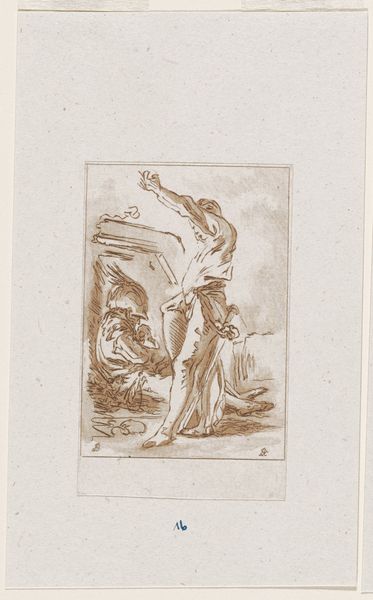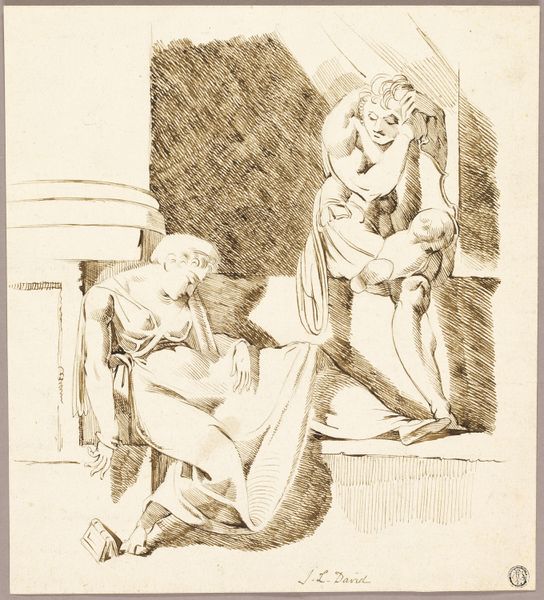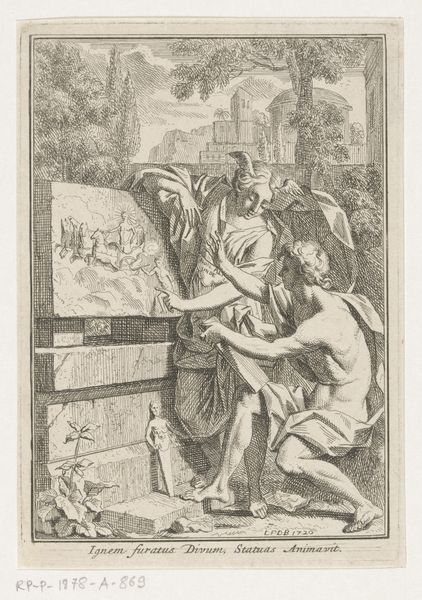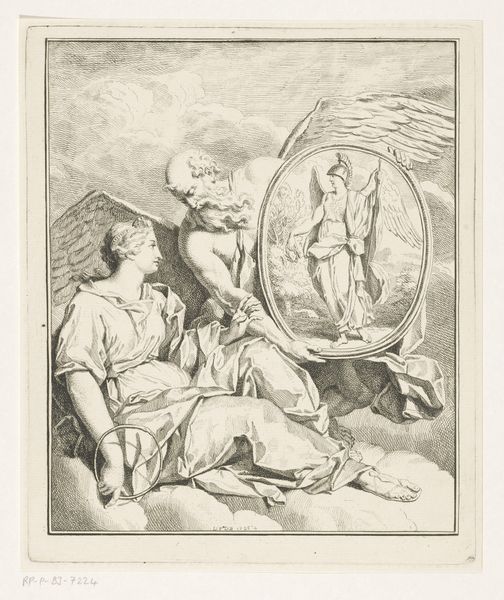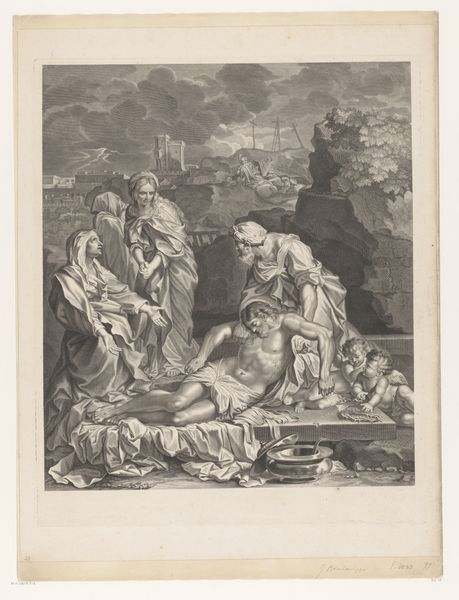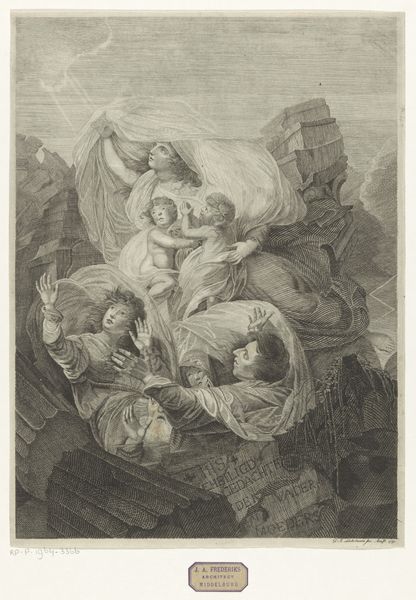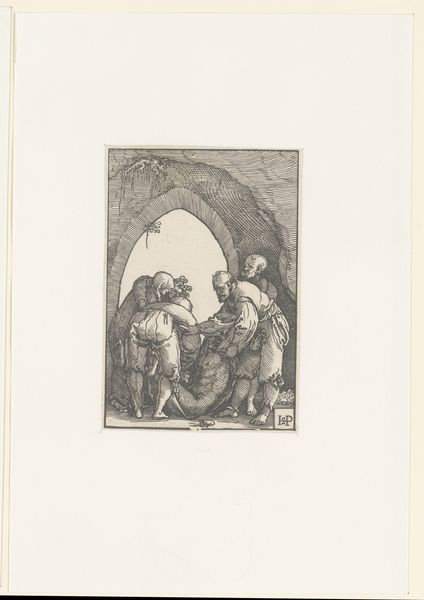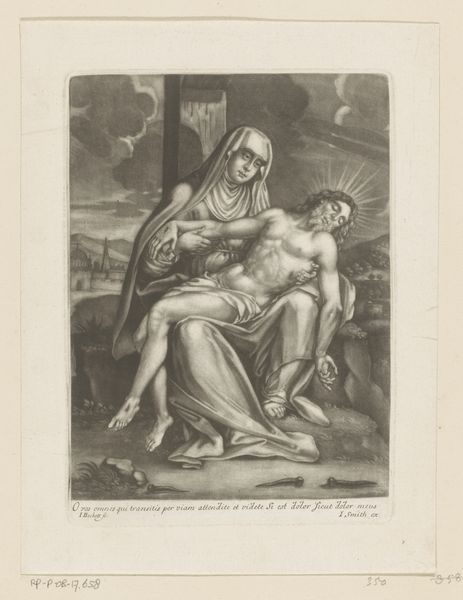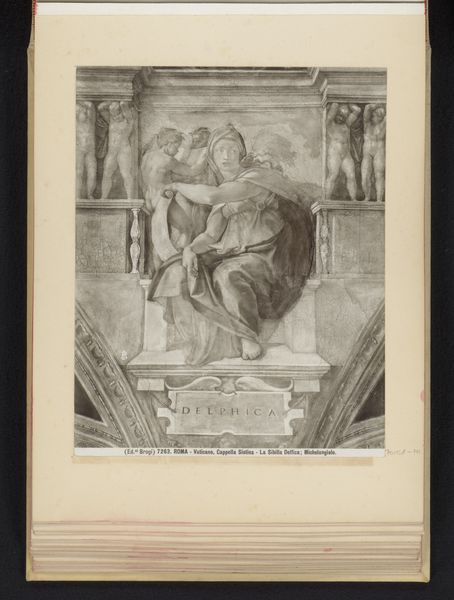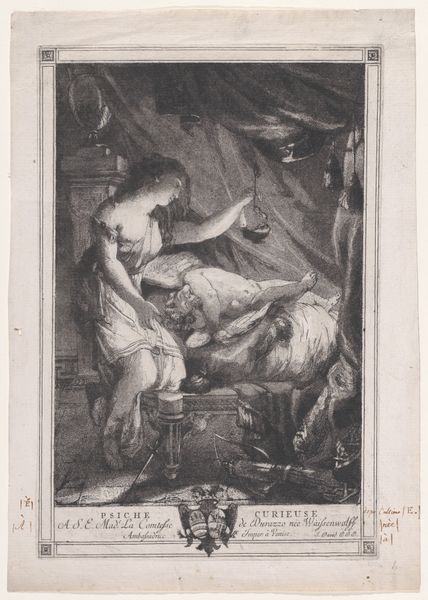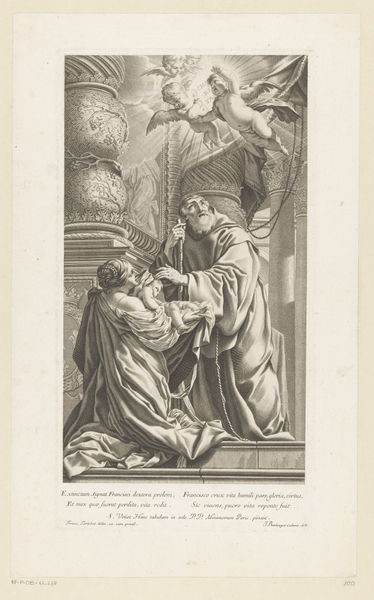
Death's Door, from "The Grave," a Poem by Robert Blair 1813 - 1850
0:00
0:00
drawing, print, engraving
#
drawing
#
allegory
# print
#
figuration
#
form
#
romanticism
#
line
#
history-painting
#
nude
#
engraving
#
male-nude
Dimensions: plate: 9 9/16 x 5 7/16 in. (24.3 x 13.8 cm) sheet: 11 11/16 x 6 9/16 in. (29.7 x 16.7 cm)
Copyright: Public Domain
William Blake created this print, “Death’s Door,” around 1805, using etching and engraving on a copper plate. Look closely, and you’ll notice that the etched lines aren't uniform; they vary in depth and thickness, giving the image a rich, textured feel. Blake was a master of these graphic techniques, which were common commercial practices. The lines define the forms, from the old man at the threshold to the radiant figure above. But these lines were also the product of labor, demanding careful and precise work. Blake likely used a sharp tool called a burin to incise lines directly into the metal, a physically demanding process. This print was made during a time of great social upheaval, as industrialization transformed the British economy. Blake's emphasis on handcraft, on the skilled manipulation of materials, can be seen as a subtle act of resistance, asserting the value of human creativity in an age of mass production. It reminds us that art is not just about the image, but also about the labor and the human touch that brings it into being.
Comments
No comments
Be the first to comment and join the conversation on the ultimate creative platform.
